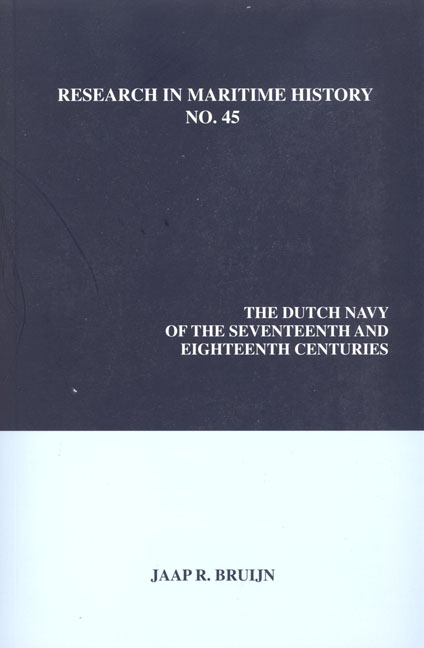Book contents
- Frontmatter
- Contents
- Illustrations
- Tables
- Series Editor's Foreword
- About the Author
- Introduction to the 2011 Edition
- Foreword
- Preface
- Introduction
- Map of the Dutch Republic
- Map of Dutch Naval Activity in European Waters
- Part One The “Old” Navy, Late 1500s-1652
- Part Two The “New” Navy, 1652-1713
- Part Three A Second-Rate Navy, 1714-1795
- Convoys and the Containment of the Barbary Corsairs
- Favouritism and Innovation
- Little Work, But More Education for the Naval Officer
- Naval Seaman, A Poor Man's Job
- Aftermath
- In Retrospect
- Bibliography
- Index
Aftermath
from Part Three - A Second-Rate Navy, 1714-1795
- Frontmatter
- Contents
- Illustrations
- Tables
- Series Editor's Foreword
- About the Author
- Introduction to the 2011 Edition
- Foreword
- Preface
- Introduction
- Map of the Dutch Republic
- Map of Dutch Naval Activity in European Waters
- Part One The “Old” Navy, Late 1500s-1652
- Part Two The “New” Navy, 1652-1713
- Part Three A Second-Rate Navy, 1714-1795
- Convoys and the Containment of the Barbary Corsairs
- Favouritism and Innovation
- Little Work, But More Education for the Naval Officer
- Naval Seaman, A Poor Man's Job
- Aftermath
- In Retrospect
- Bibliography
- Index
Summary
The overthrow of the old Republic of the Seven United Provinces by French revolutionary armies in 1795 had far-reaching consequences for its political structure and for Dutch society at large. The sovereignty of the provinces was ended and the direction of the government centralized at The Hague. The old political leaders, the stadholder and the Orangistic regents were replaced by new leaders recruited from classes other than the traditional ruling élite. Many reforms that affected both public and private life were introduced during the Napoleonic period. In 1810, the Dutch territory was annexed by the French empire and its independence completely lost. For the Netherlands, the downfall of Napoleon resulted in the restoration of the House of Orange in November 1813. The Netherlands became a monarchy under King William I, the eldest son of William V, who had died in exile. From 1815 to 1830, the Southern Netherlands also belonged to William's kingdom, but in 1830, a brief revolution led to the creation of an independent Belgian kingdom. The Dutch were thrown back again into the position of being a small power. Only the possession of a large colonial empire in Indonesia and some other smaller territories provided the Netherlands with additional political and economic importance in world affairs.
The so-called “Batavian and French Period,” from 1795 until 1813, did considerable harm to Dutch overseas trade and shipping. British dominance at sea was such that maritime activities under Dutch colours were almost impossible. Dutch entrepreneurs again exploited their traditional skills in the use of other, neutral flags and documents. British blockades and captures, together with French economic retaliation, resulted, however, in a downward trend for the Dutch merchant trade. In 1811 and 1812, shipping came almost to a complete standstill. A major change in Dutch overseas activities was the dissolution of the East India Company. Asia was now open to private enterprise, and during the first half of the nineteenth century, Dutch maritime affairs were increasingly centred in Indonesia. Another significant change was the decline in the Dutch Baltic trade.
Dutch naval activity, of course, was also affected by these new developments. The overriding conditions under which the navy operated during this time were the lack of full independence and the British blockade of Dutch ports.
- Type
- Chapter
- Information
- The Dutch Navy of the Seventeenth and Eighteenth Centuries , pp. 187 - 190Publisher: Liverpool University PressPrint publication year: 2011



